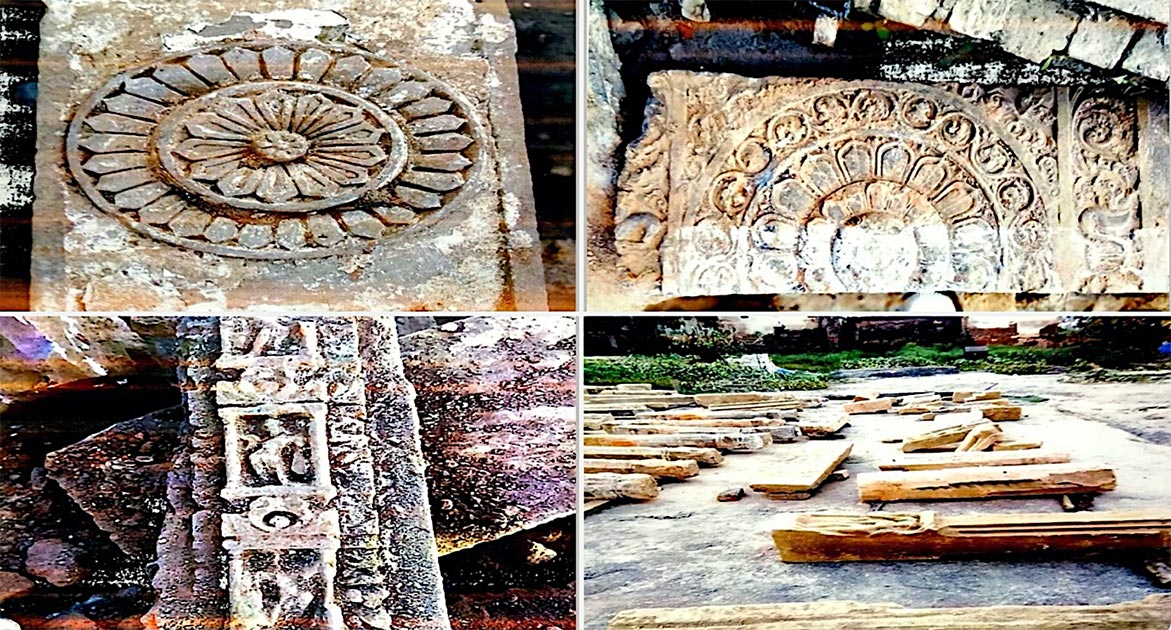Can Ancient Temples Unearthed in Ayodhya Put Religious Dispute to Bed?
In India, the remnants of ancient temples have been uncovered during construction work on a new religious complex. It is almost certain that they are Hindu temples, and they have already yielded many archaeological treasures. They were found in Ayodhya, which has been a source of Muslim-Hindu tensions for many decades.
The remains were found during work on the Ramjanmabhoomi (RJB) temple site in Ayodhya. Hindus believe that this is the location of the birthplace of Lord Rama, one of the most important Hindu gods. During preparation of the ground for the new temple, workers came across several items, and they alerted the local authorities. Work has just resumed at the site after the easing of the lockdown in India.
New Discoveries at the Historic Site
The general secretary of Shree Ramjanmabhoomi Teertha Kshetra Trust, Champat Rai, told The New Indian Express that “on removing the debris from the site during the land leveling activity, pillars and other structures of ancient temples were discovered.” This was not a surprise as the general area is known to have been the site of many Hindu sacred buildings. In the 677-acre location, there are “the remains of half a dozen temples,” reports Jagran.
An intensive dig at the site began on 11 May and is continuing. Mr. Rai told The New Indian Express that “since then many objects of archaeological importance like flowers made of stone, Kalash, Aamalak, Dorjamb, have been discovered during excavation.” Work was slow, because of continued restrictions, such as social distancing. The Times News Now reports that “a 5 feet (1.5 m) Shiva Linga, 7 pillars of black touchstone, 6 pillars of red sandstone and broken idols of gods and goddesses were also been discovered.” A Shiva Linga is an abstract symbol that represents the Hindu god Shiva.

Two the pillars excavated at the Ayodhya site. (Shri Ram Janmbhoomi Teerth Kshetra Trust)
Built By an Emperor Loved by the People
Archaeologists have not yet identified the temples, but they suspect based on the discovery of the seven black touchstones that they are connected to a column, which may have been built 2000 years ago. There is the possibility that it is the “temple that Vikraamaditya had built,” according to Jagran. He was a legendary Hindu emperor and is considered by many Indians to be the ideal ruler.
There are believed to have been many more archaeological discoveries made at the site, but the authorities have said very little. The trust that oversees the area is waiting for a report by experts before they give a full account of what has been found. It is widely believed that this ancient temple could rewrite the history of Ayodhya. Dr. Kavita Singh of Saket College, told Jagran that “the Ramjanmbhoomi complex contains a full script of the golden past and it will come out gradually.”

Carvings of deities excavated at the Ayodhya site. (Shri Ram Janmbhoomi Teerth Kshetra Trust)
- Court Declares Ayodhya Hindu Land, Offers Muslims Other Space
- Modern Hindus Forbidden From Eating Beef But Ancient Hindus Ate the Sacred Cow
- Dwarka: The Home of Krishna is a Gateway to Heaven and an Underwater City
Longstanding Sectarian Violence
Once the famous Babri Masjid Mosque stood at the site, which was built by the founder of the Mughal Empire in the 16 th century. It was destroyed by Hindus in 1992, because they claimed that the Muslims had destroyed an earlier temple dedicated to Lord Rama. This led to widespread sectarian violence across India. Hindus and Muslims have fought a lengthy legal battle over who had ownership of the location.
Archaeological evidence was crucial in the case, especially some masonry from a Hindu temple found in the walls of the Babri Masjid Mosque. According to The Hans India, “the Supreme Court of India gave its final judgment on the Ayodhya dispute in November 2019.” It gave the land where the mosque had once stood to the Hindus, who had been in continuous occupation of the site since the destruction of Babri Masjid. The high court granted a local Muslim trust, some lands for the construction of a new mosque.
The New Indian Express states that the archaeological discoveries “substantiate the claims of the presence of a temple on that site, which was a bone of contention for decades and was later resolved by the Supreme Court.” In particular, these new finds may back-up the claims of Hindus that they owned the Ayodhya site long before the coming of the Muslims.
For now, work on the new holy place has been suspended to allow the experts to complete their research. However, it is believed that the construction of the new temple will commence shortly, and Hindu activists are committed to erecting it in record time. Some of the stones from the ancient religious sanctuaries may be placed in the new structure dedicated to Rama.
Top image: Discoveries made at the Ayodhya excavation site. Source: Shri Ram Janmbhoomi Teerth Kshetra Trust
By Ed Whelan



















